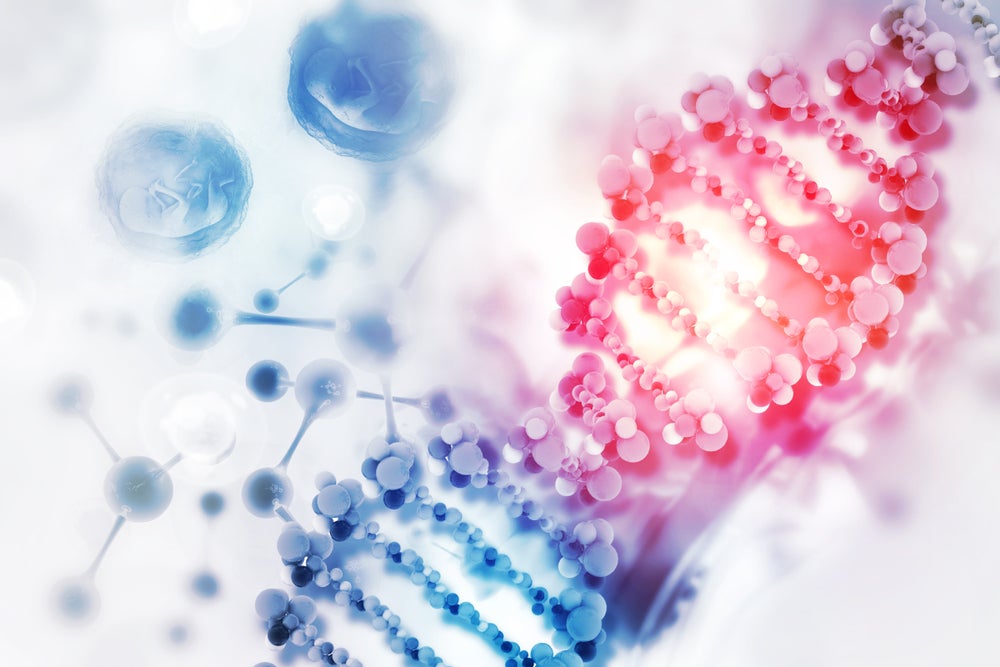In 2015, ViaCyte, which was acquired by Vertex Pharmaceuticals in 2022, partnered with CRISPR Therapeutics to develop treatments targeting the genetic causes of human disease.
The first treatment to emerge from this research programme is exagamglogene autoemcel (exa-cel), formerly known as CTX-001, an investigational, autologous, ex vivo clustered, regularly interspaced short palindromic repeats (CRISPR)-Cas9 therapy developed for transfusion-dependent beta thalassemia (TDT) and severe sickle cell disease (SCD). Clinical trials for exa-cel are underway and have shown promising results so far.
To treat both TDT and SCD, exa-cel alters the patients’ own hemopoietic stem cells to produce higher levels of foetal haemoglobin (HbF), which is naturally present at high levels during foetal life and switches to the adult form after birth. HbF can remove the need for transfusion in TDT patients and prevents the painful and debilitating sickle crises (blockage of blood vessels), known as vaso-occlusive crisis (VOC), in patients with SCD.
The therapy begins with the collection of the patients’ haemopoietic stem and progenitor cells from their own peripheral blood, which are then edited using cutting-edge CRISPR-Cas9 technology and infused back into the patient via an autologous haemopoietic stem cell transplant (HSCT).
HSCT involves different processes that can result in side effects of ranging severity that are unrelated to exa-cel itself such as side effects that are due to the myeloablative busulfan conditioning used in HSCT. After transfusion, patients are monitored for engraftment, where the edited cells can produce mature red blood cells. Once this has occurred, patients are monitored to assess the effect of exa-cel.
See Also:
The first two pivotal trials to assess the efficacy and safety of exa-cel are the ongoing Phase I/II/III CLIMB-111 and CLIMB-121 open-label trials, where a single dose of exa-cel has been used on patients with TDT and SCD, respectively.
How well do you really know your competitors?
Access the most comprehensive Company Profiles on the market, powered by GlobalData. Save hours of research. Gain competitive edge.

Thank you!
Your download email will arrive shortly
Not ready to buy yet? Download a free sample
We are confident about the unique quality of our Company Profiles. However, we want you to make the most beneficial decision for your business, so we offer a free sample that you can download by submitting the below form
By GlobalDataBoth trials involved the enrolment of up to 45 patients aged between 12-35 years, who have been followed up for two years post-infusion and asked to participate in the long-term follow-up, CLIMB-131. The CLIMB-111 trial initially began with 15 patients, all of whom demonstrated initial safety and transfusion independence upon the follow-up past the three-month stage. Follow-ups ranged from four to 26 months and all presented with a steady increase in levels of total haemoglobin (tHb) and HbF, with tHB increasing from an average of 8.9 to 16.9g/dL and HbF from 67.3% to 99.6%.
The CLIMB-121 trial initially began with seven patients, all of whom also showed initial safety and loss of VOC upon follow-up past the three-month stage. Follow-ups ranged from five to 22 months and, like CLIMB-111, presented a steady increase in levels of tHb and HbF, with tHb increasing from an average of 11 to 15.9 g/dL and HbF from 39.6% to 49.6%.
In June 2023, results from CLIMB-111 and CLIMB-121 were announced at the 2023 Annual European Hematology Association Congress. Of the 48 TDT patients receiving exa-cel, 27 patients were eligible for the evaluation of primary and key secondary endpoints at the time of the analysis. Of these 27 patients, 24 patients (88.9%) had been transfusion-independent for at least 12 consecutive months, with a mean weighted haemoglobin of at least 9g/dL.
The mean duration of transfusion-independence was 20.5 months with a maximum of 40.7 months. Of the 35 SCD patients receiving exa-cel, 17 patients were eligible for the evaluation of primary and key secondary endpoints at the time of the analysis. Of these 17 patients, 16 patients (94.1%) had been VOC-free for at least 12 consecutive months. The mean duration of being VOC-free was 18.7 months, with a maximum of 36.5 months.
All 17 patients achieved the key secondary endpoint of being free from hospitalisations related to VOCs for at least 12 consecutive months. The one patient who did not need hospitalisation due to VOC-related reasons was not completely VOC-free and had a complex set of comorbidities. An analysis of all SCD patients showed the mean HbF was more than 30% of tHb by the third month and was then maintained at approximately 40% through follow-up, with pancellular distribution.
In patients with both TDT and SCD, the increase in Hb level occurred mostly within the first few months of therapy and was maintained. The mean proportion of edited alleles present in bone marrow and peripheral blood was stable, indicating the successful permanent editing of the long-term haemopoietic stem cells. Two TDT patients experienced serious adverse events (SAEs) that were considered to be related to exa-cel.
One of these patients experienced idiopathic pneumonia syndrome related to both exa-cel and busulfan. The other patient experienced haemophagocytic lymphohistiocytosis, acute respiratory distress syndrome, and headache. All four of these SAEs have been resolved. There were no SAEs related to exa-cel in SCD patients.
There are also several other ongoing trials of exa-cel. CLIMB-141 and CLIMB-151 are Phase III trials that will assess the safety and efficacy of a single dose of exa-cel in patients aged 2-11 years with TDT and SCD, respectively. CLIMB-161 is a Phase IIIb trial to support the expansion of the manufacturing footprint after initial potential approval and launch. CLIMB-131 is a long-term trial following patients for up to 15 years to assess the long-term effects of the therapy from the CLIMB-111, CLIMB-121, CLIMB-141, and CLIMB-151 trials.
Due to these promising results, exa-cel has been granted numerous key regulatory designations for both TDT and SCD, including regenerative medicine advanced therapy, fast track, orphan drug, and rare pediatric disease designation from the Food and Drug Administration (FDA); orphan drug designation from the European Commission; and priority medicines designation from the EMA.
Exa-cel has also been granted an Innovation Passport under the Innovative Licensing and Access Pathway from the Medicines and Healthcare products Regulatory Agency in the UK. On 8 June 2023, CRISPR Therapeutics announced the FDA’s acceptance of the biologics license applications for exa-cel. For SCD, exa-cel was granted priority review and assigned a Prescription Drug User Fee Act (PDUFA) target action date of 8 December 2023. For TDT, exa-cel was granted standard review and a PDUFA target action date of 30 March 2024.
Exa-cel marks the beginning of a whole new realm of regenerative medicine, as CRISPR-Cas9 has incredible potential to treat diseases that could not otherwise be treated. There are, however, ethical concerns regarding this new technology and its ability to edit the genetic makeup of cells, particularly germline cells. There are concerns over the concept of a ‘slippery slope’; specifically, once the use of CRISPR-Cas9 is justified to treat one disease, it can progress in small steps towards potential ‘designer’ babies and germline editing.
Cost is also a potential barrier to its uptake. For example, the Institute for Clinical and Economic Review, which uses quality-adjusted life year as a metric to measure the value and cost-effectiveness of a healthcare intervention, suggests that exa-cel would achieve thresholds for cost-effectiveness if priced between $1.35m-$2.05m per treatment course, which is above commonly cited thresholds for healthcare systems.










Related Company Profiles
Vertex Pharmaceuticals Inc
CRISPR Therapeutics AG